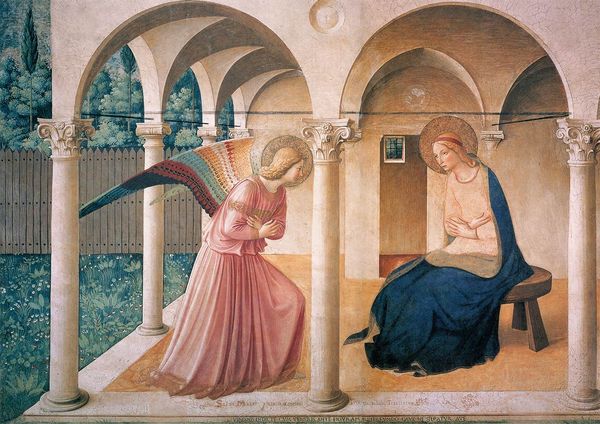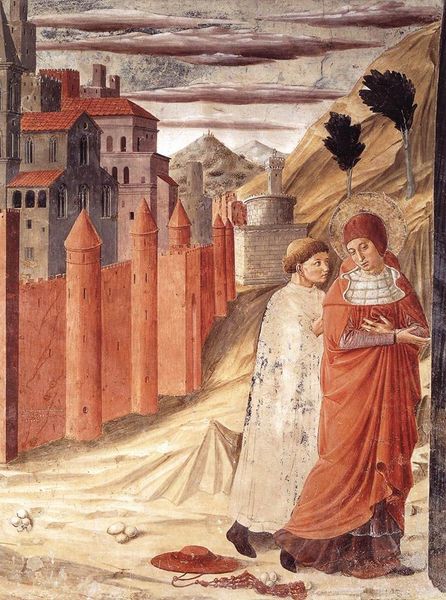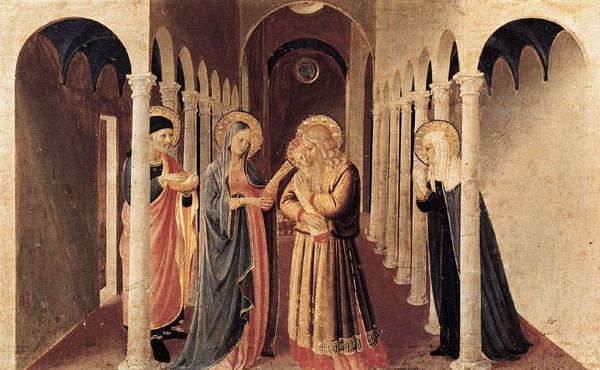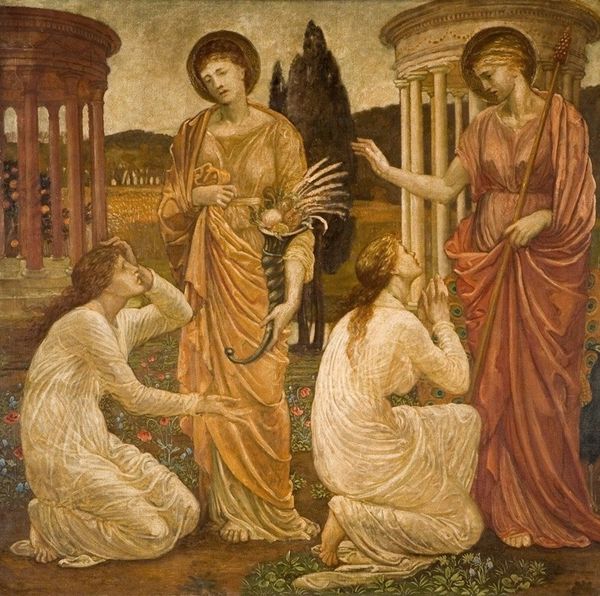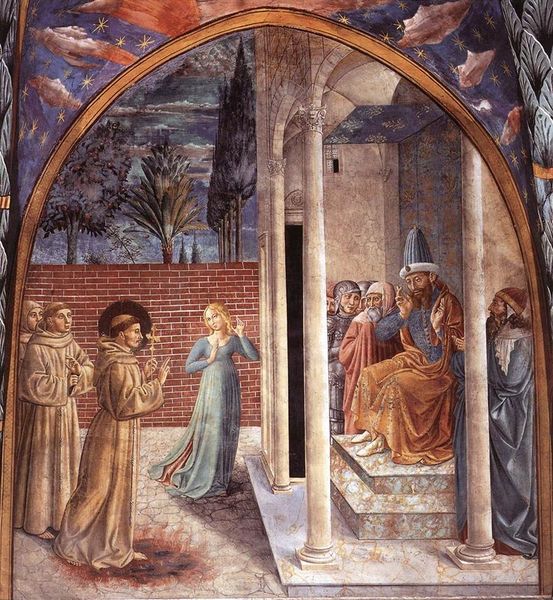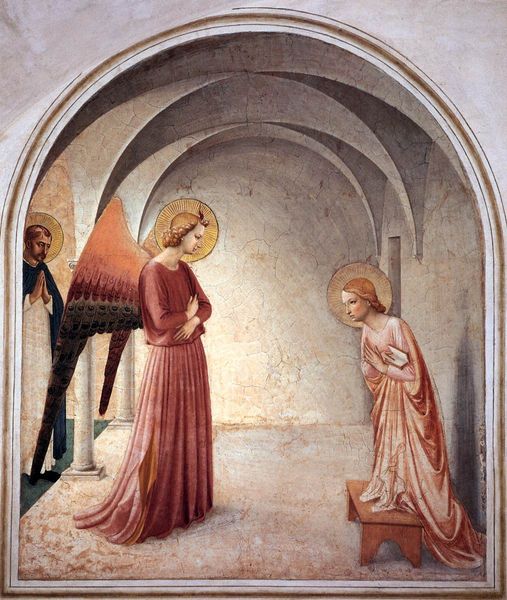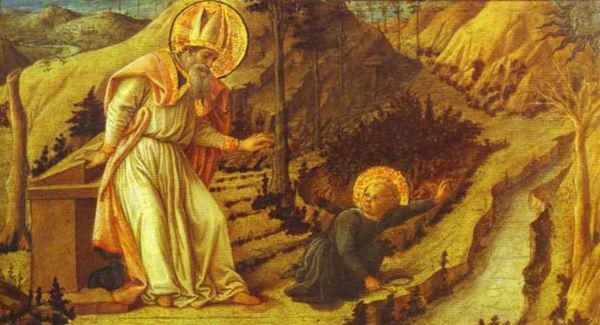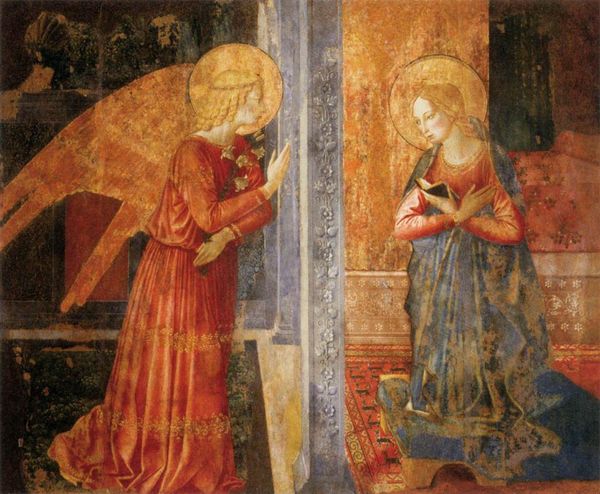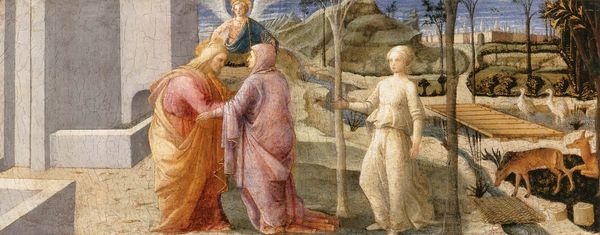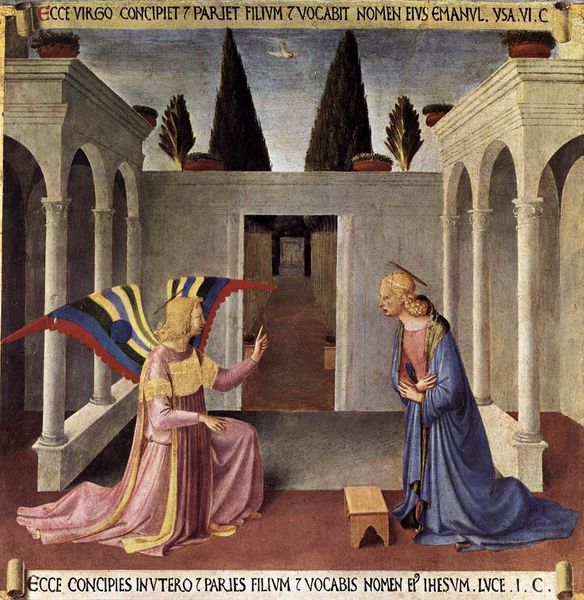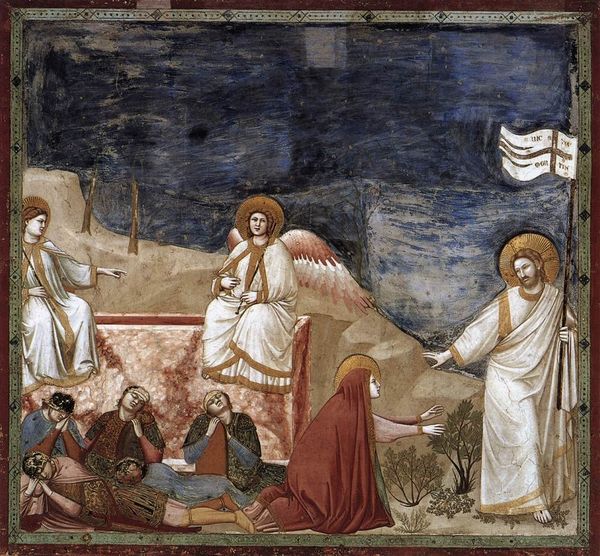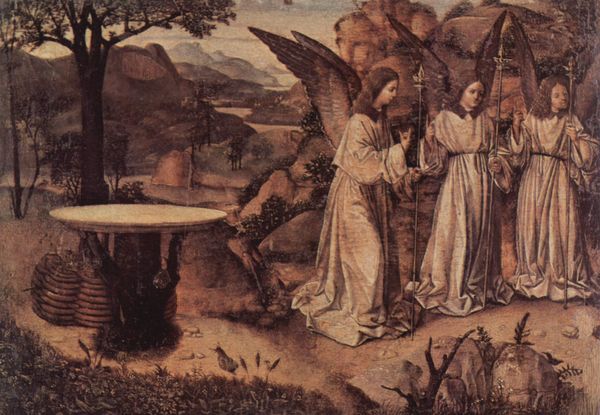
tempera, painting, fresco
#
narrative-art
#
tempera
#
painting
#
landscape
#
figuration
#
fresco
#
oil painting
#
christianity
#
italian-renaissance
#
early-renaissance
#
christ
Dimensions: 180 x 146 cm
Copyright: Public domain
Curator: Welcome to this quiet corner where we find Fra Angelico’s fresco, "Noli Me Tangere," painted around 1442 and still gracing a wall in the Basilica di San Marco, here in Florence. What strikes you about it? Editor: Oh, this is lovely! There's such a peaceful, almost ethereal, quality to it. The colors are soft, and even the figures seem to float a bit. It’s a very gentle encounter. Curator: Exactly. It depicts the moment Christ reveals himself to Mary Magdalene after his resurrection. Notice the garden setting, filled with symbolic elements like the walled garden indicating a sacred and enclosed space. Editor: Yes, and Mary Magdalene reaching out, that "Noli Me Tangere," "Do not touch me," a boundary, perhaps. It is the charged space between disbelief and utter faith. It reminds me how we often want to grasp what eludes us. Curator: That gesture speaks volumes. It's not merely a physical barrier, but an acknowledgment of Christ's transformed state. He is present but also ascending. Consider the symbolic implications of the gardener's guise he initially adopts; he tends to the human soul with careful intention. Editor: Oh, yes, there is so much symbolism here. You know, the cave looks less like a tomb and more like an opening—a portal to another realm. The Italian Renaissance love of pictorial devices! Fra Angelico uses landscape as another means to frame these ideas of ressurection and a 'new creation' motif. Curator: And the gentle, sloping landscape leads the eye upwards, reinforcing that sense of ascension. It really showcases the mastery he had developed by this time in his artistic journey. His blending of devotional intention with formal artistry. Editor: It is rather moving. It speaks to the intimate moments of faith that often defy easy explanations. I always see something different each time I visit this fresco; something I missed or misunderstood from previous viewing. It rewards meditation. Curator: Well said. A divine scene rendered with human grace and sensitivity. It invites us to reflect on our own moments of encountering the sacred and the transformative power of belief. Editor: Ultimately, it shows how, at some level, seeing is believing, and sometimes not believing can show its own kind of love. Thank you!
Comments
No comments
Be the first to comment and join the conversation on the ultimate creative platform.
